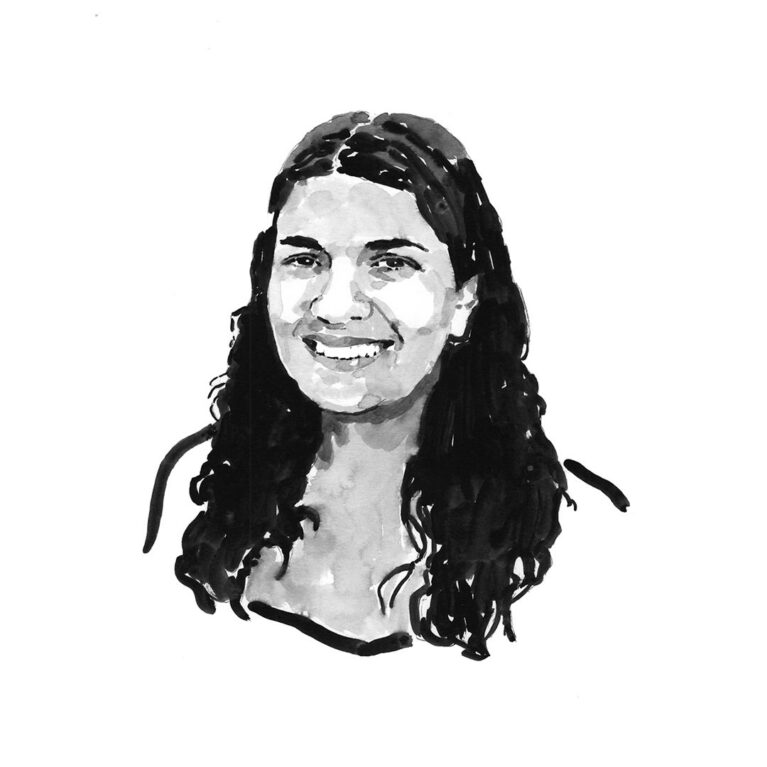Diana Catarino

Who I am
For as long as I can remember I have had a passion for nature and its inhabitants, and for the sea in particular. I grew up in a small coastal village close to Sintra in Portugal and spent summer holidays playing at the beach. I was always very curious about all the creatures in the rock pools and would dedicate part of the day to checking what the tide had left on the sand, on the rocks, and in the pools – and I still love doing that today! In my teens, I went on a trip to the Azores, where I snorkeled for the first time and fell in love with the islands and the amazing display of colourful fish underwater, as well as the rich biodiversity and huge schools of fish. That was when I decided that I wanted to move to the islands and take a degree in marine biology there. I started working on the deep-sea demersal surveys at the Department of Oceanography and Fisheries of the University of the Azores, where my passion for the taxonomy, ecology and conservation of deep-water elasmobranchs began. In 2018 I completed my PhD in marine sciences, studying the ecology and population genetics of deep-sea fish and sharks and furthering my knowledge about this poorly known ecosystem and all the threats that deep-water elasmobranchs face. My current research interests combine state-of-the-art molecular tools and deep-water elasmobranch taxonomy, and how they can be used to help protect the diversity of these demersal species. After all these years, I am still driven by the same curiosity that I had as a child, wanting to know more about these stunning and mysterious animals and to promote their conservation so that they will continue to amaze future generations.
Where I work
I am lucky to work literally in the middle of the ocean! A remote archipelago about halfway between Europe and North America, the Azores comprise nine volcanic islands. I work on Faial Island, where the Okeanos Research Centre (University of the Azores) is based. We are perched on the Mid-Atlantic Ridge and are surrounded by great depths, which makes the Azores a prime location for deep-sea research. Fishing is one of the main local activities, with bottom longlines and handlines as the main gear used to target demersal species; trawling is prohibited in the region. At present about 30 deep-water elasmobranch species have been identified around the Azores and they are frequently taken as by-catch, although it is still uncertain to what extent this is happening. It is thus possible that they are at risk and they need to be carefully monitored if they are to be managed sustainably.
What I do
I spend large parts of spring and summer doing field work, surrounded by the deep blue waters of the Azores. During this period I join the demersal research surveys and we take samples from around all the islands as well as several sea mounts. Typical work on board consists of recording biological data about the deep-sea species collected and tagging the fish and sharks before returning them to the sea. With the support of the Save Our Seas Foundation I will also collect water samples down to a depth of 1,500 metres (5,000 feet) to be analysed for environmental DNA (eDNA) and will deploy deep-sea baited cameras at the same depth to evaluate the diversity and abundance of deep-water elasmobranchs. eDNA is an innovative tool that enables us to detect and identify species present in an area solely from samples of sea water. My plan is to compare these two non-invasive methodologies with deep-sea longline surveys as biomonitoring tools. Over the winter, much of my time is spent in the laboratory processing the eDNA samples collected and analysing the images taken by the baited cameras. Outreach activities are also part of my routine and I engage with local fishers to create awareness about the conservation of deep-water elasmobranchs. Many of the baited cameras’ images are used in these workshops and on social media, since seeing these amazing animals in their natural habitat creates a deep impression on the public and helps to promote the conservation of both the species and their habitats.
